Johnson
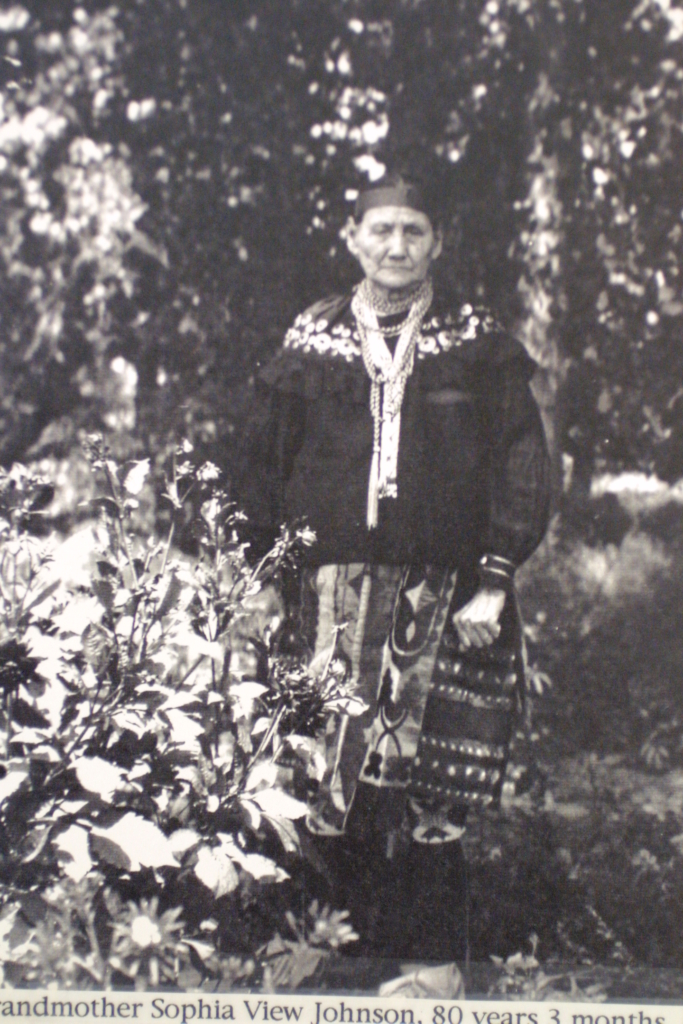
Sophia Vieux (Johnson) was born in Council Bluffs, Iowa, in 1840 to Shanote (Charlotte), daughter of respected St. Joseph headman Chisagen (Big Water), and Louis Vieux. Like many Potawatomi, the family were prominent fur traders in the Great Lakes region before removal.
Afterward, Sophia attended school at St. Mary’s in present-day Kansas where she met restaurant proprietor Jacob Johnson. The couple wed three years later. After Jacob’s brother Andrew died, they moved to Vermillion, Kansas, to work for her father as a toll bridge collector.
In 1861, the family relocated to Rossville, Kansas. When the opportunity to take allotment in Oklahoma Territory became available, the family initially moved near Sacred Heart. Around 1873, they relocated to Pleasant Prairie where they farmed, raised cattle and owned a general store. The Johnsons settled on Sophia’s allotment 2 ½ miles west of Shawnee and had 12 children that carried on the Johnson family legacy.
Lafromboise
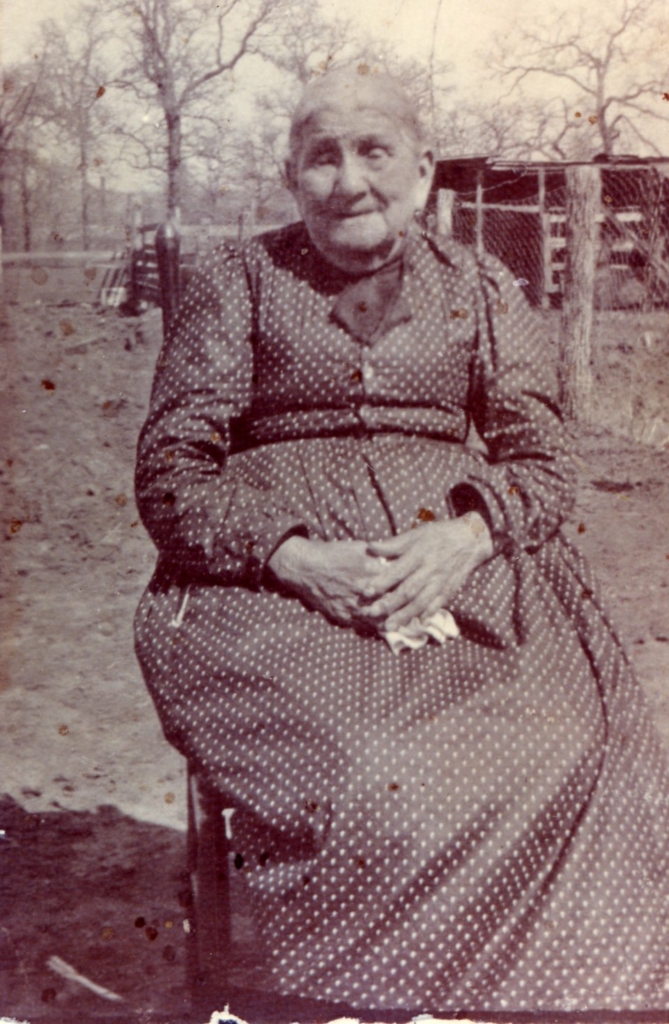
Chief Joseph Lafromboise was born in 1798 to Francois Lafromboise and Shawenquah
(Southern Wind Woman), around the Saint Joseph River where the family owned and
operated a trading post. They relocated from Milwaukee to Chicago around 1800, and
Joseph became a prominent headman for the Tribe.
Chief Joseph married Therese E. Peltier (Metis), and they had 13 children together. Their oldest daughter, Theresa Lafromboise, experienced three of the Tribe’s removals and moves during the 19th century.
Theresa and her family were removed from the Great Lakes region to Council Bluffs, Iowa, before eventually making their way to Silver Lake, Kansas. Around 1891, she relocated to present-day Pottawatomie County, Oklahoma. Theresa wed three times — first to last, Thomas Watkins, J. Allen Hardin and Medard Benjamin Beaubien. Theresa passed away in 1914. Her legacy remains visible in her descendants today.
LaReau
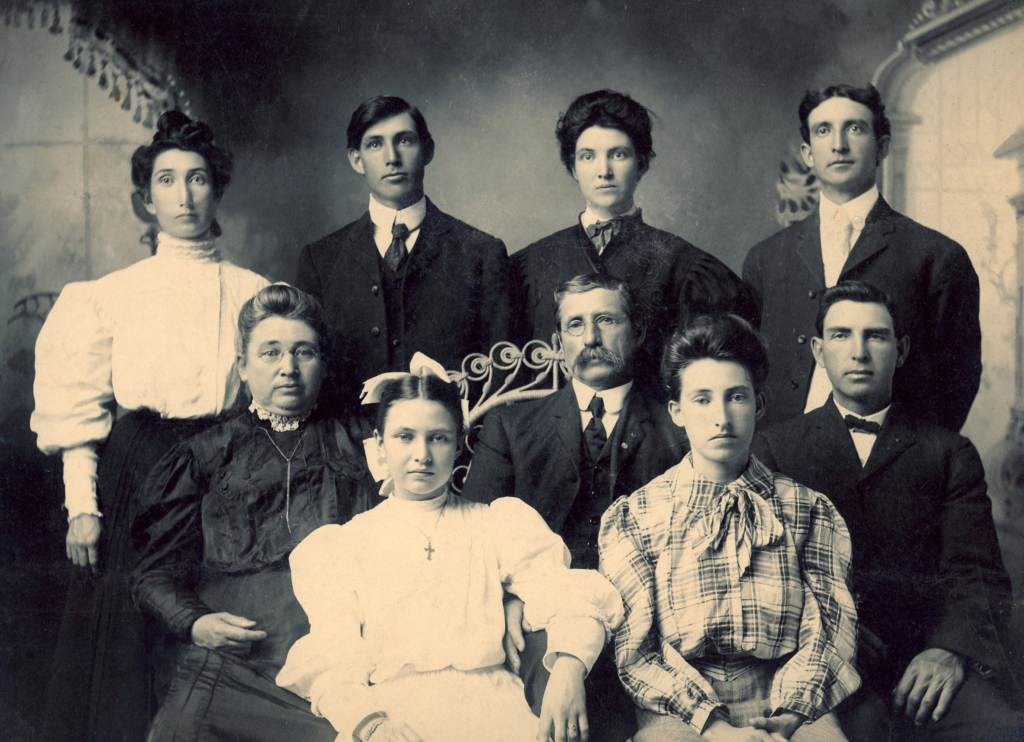
Mary Anastasia Higbee and Joseph LaReau wed on July 25, 1871, in St. Marys, Kansas, and they bore their seven children on the Potawatomi reserve near the St. Mary’s Mission.
As a Citizen Potawatomi, Mary Anastasia received a land allotment in Indian Territory through the Dawes Act of 1887. She and Joseph resolved to make one final journey together and carve out a home and future for their family along the plains of Indian Territory. They relocated to Wanette in 1896 and raised their children on a family farm.
Joseph and Mary Anastasia’s offspring quickly became integral parts of their new community. Joseph Alva (Alvie) LaReau, the oldest son, started a livery and feed store, and Francis Casimir LaReau (Cass) became a merchant in Wanette for many years.
LeClair
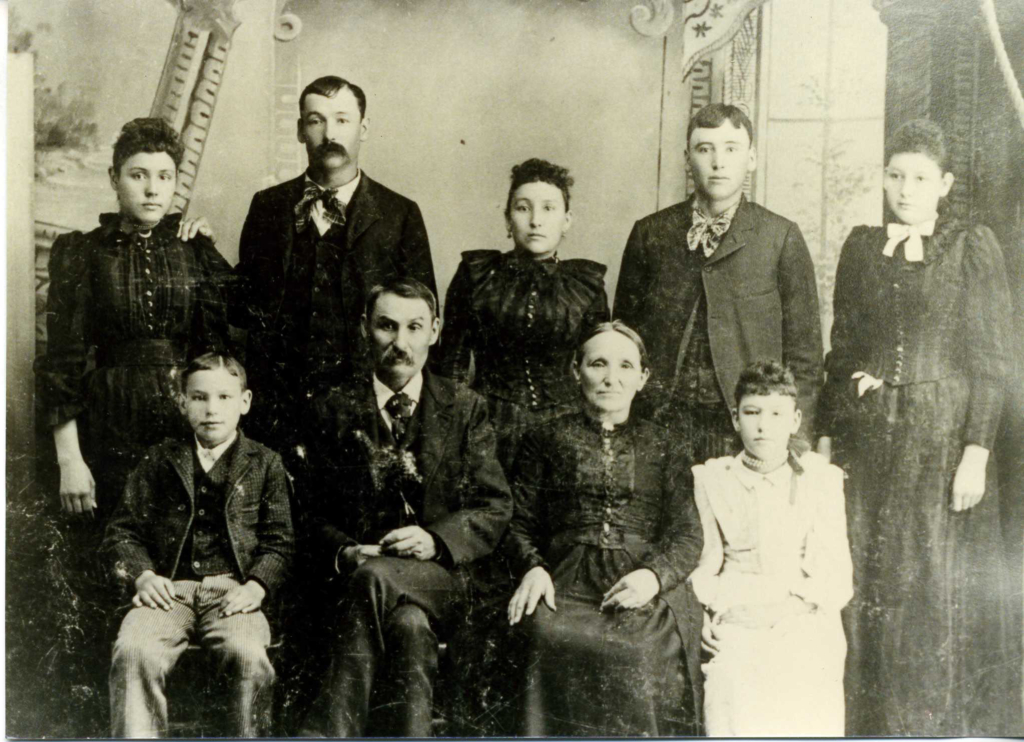
Pierre LeClair — married to Cecile LeClair — was an important Potawatomi translator. John Kinzie, one of Chicago’s earliest settlers and fur trader, employed Pierre as an interpreter. In this role, Pierre mediated the terms of surrender after the Battle of Fort Dearborn in 1812. By 1832, Pierre fought alongside Chicago Potawatomi chiefs Wabaunsee, Shabbone and Bigfoot during the Black Hawk War and served as an official interpreter.
After the 1833 Treaty of Chicago, Pierre removed with the Potawatomi to Missouri. He served as the key interpreter in an 1845 delegation that traveled to Washington, D.C., to discuss the cession of the Iowa reserve to the government. He became well known for his colorful and moving speech addressed to President Polk. In his statement, Pierre referenced prior treaties between the Tribe and the United States, highlighting broken promises. He also discussed the beauty and connection the Potawatomi had to their homelands, which they ceded for little in return.
Pierre’s efforts helped make the delegation a success, and soon after, Tribal leaders moved the band to Kansas. Many of Pierre’s children emerged as leaders in Kansas and eventually Oklahoma.
Melott
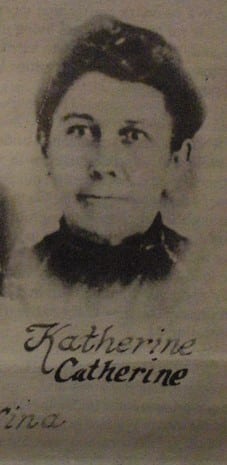
Catherine (Katy) Theresa Bergeron was born in 1850, the second daughter of Watseka (Daughter of the Evening Star) and Francis Bergeron. She married Joseph L. Melott, whose family emigrated from France to America in 1826. In 1868, they were among the first families who came to the new Potawatomi reserve in Indian Territory from Kansas.
From 1868 to 1871, the Melott family became familiar with their new environment. By the spring of 1871, Joe returned to Kansas and led six families back to Indian Territory in 14 covered wagons to become the first group of Potawatomi to settle on the new reservation. Many others followed suit.
Father Isadore Robot arrived in Indian Territory in 1876 and formed a friendship with Joseph. The Melott cabin hosted the first Catholic mass in the county. Later that same year, with the support of the family and other Tribal members, the Citizen Potawatomi gifted the church one square mile of land that became home to the Sacred Heart Mission.
The Melotts became the principal founders of Mission Hill, now known as Wanette, Oklahoma.
Rhodd
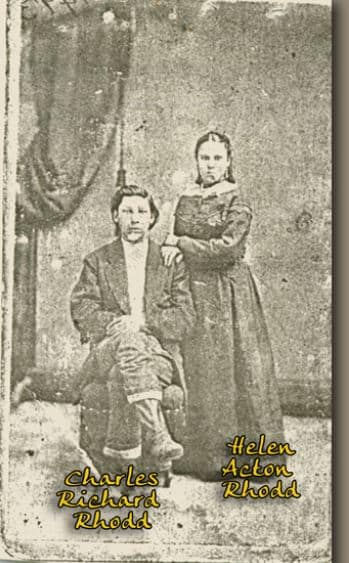
Charles Richard Rhodd, the youngest son of Charles H. Rodd and Wasiewen (Light Reflecting Off of Water), was born around 1854 in Rossville, Kansas. His name first appeared on the Kansas Potawatomi Tribal Rolls of 1863 at 8 years old.
His older brother, Alexander, served as his guardian after their father returned to the Great Lakes region and their mother, Wasiewen, passed away.
On Nov. 2, 1872, Charles Richard Rhodd married Helen Acton (Rhodd), the daughter of Angeline Bellaire and James Acton. Their wedding took place in Rossville, Kansas. Charles kept books for the Tribe for many years. He was also an expert in herbal medicines with a vast knowledge of plants and other natural treatments for various diseases. Members of surrounding tribes regularly called on Charles for medicinal purposes.
The families’ children lived through the Civil War and other trying times, finding love and support in each other. Their turbulent upbringing created an unbreakable bond that continues today.
Tescier
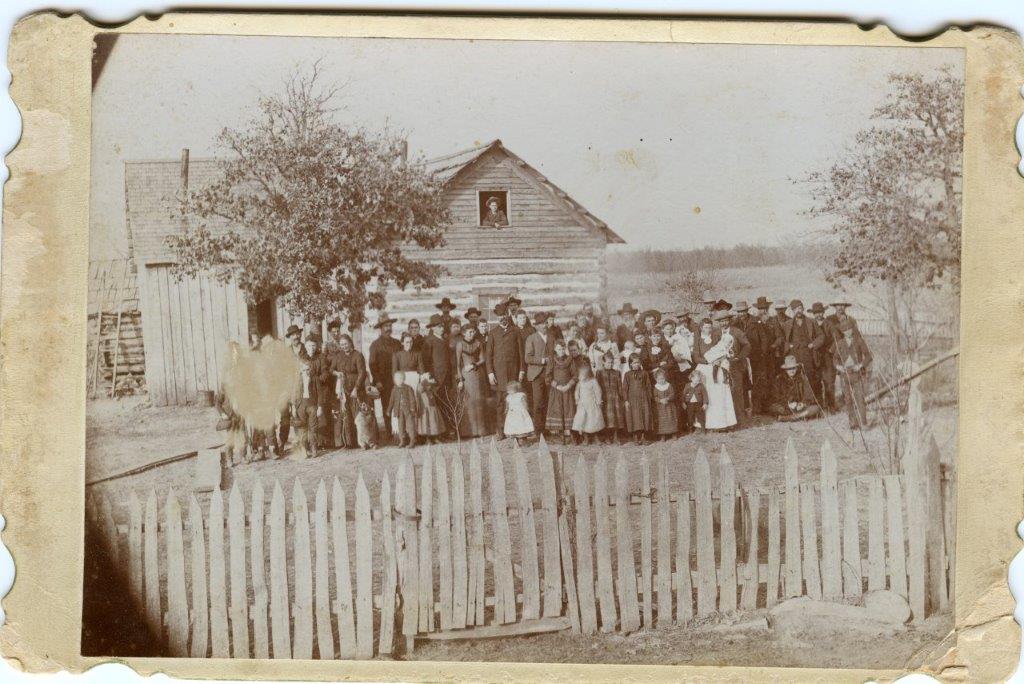
In 1844, Anthony Tescier married Catherine Bourbonnais. Through the 1833 Treaty of Chicago, Catherine and her family relocated to lands between the Mississippi and Missouri Rivers. Eventually, the family moved to Council Bluffs, Iowa, before they arrived at the new reservation in Kansas, where Catherine passed away in 1860. One year later, Anthony married his first wife’s niece, Elizabeth Catherine Bourbonnais.
The Tescier family eventually moved to Indian Territory and established a family farm on their allotment near present-day Choctaw, Oklahoma. Although Anthony Tescier passed away in 1891, Elizabeth Catherine Tescier remained an icon of love and strength in the Tescier family until her death in 1920.
The Tescier family saw the country develop as few others have. They lived through the Land Run of 1889 and experienced the breakdown of the reservation into allotted farmsteads. They witnessed the birth of Oklahoma and endured both the Great Depression and the Dust Bowl. Their lives of hardship and grief, balanced by effort and perseverance, and their devotion to family remain an inspiration to later generations.
Weld
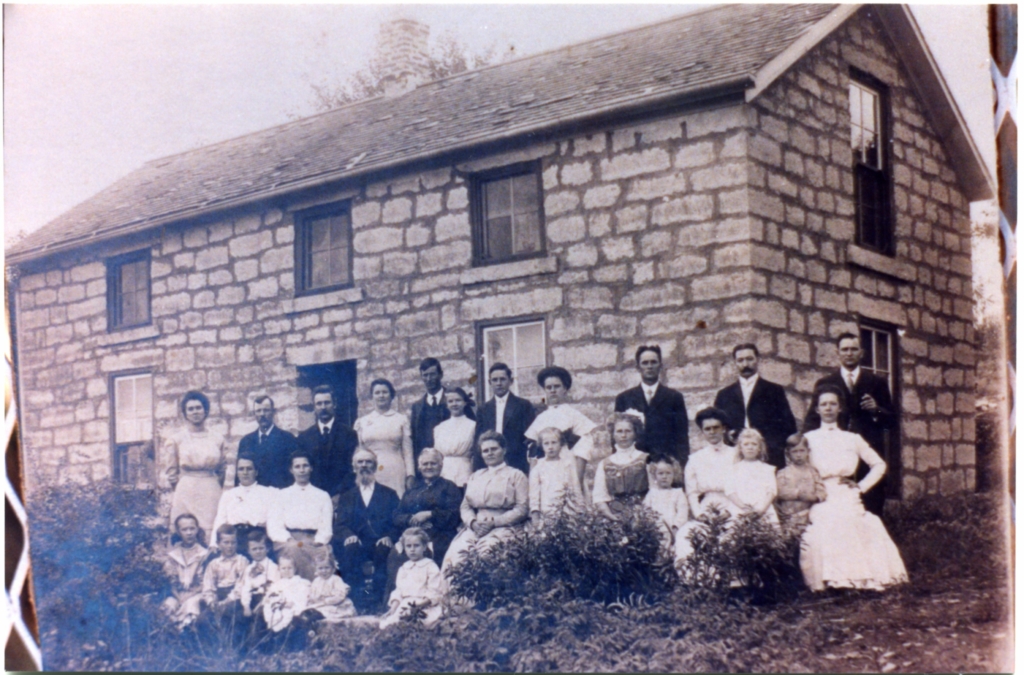
Mary Margaret Ogee, born in 1819 in Illinois, married Hiram Weld around 1835. After the Potawatomi removed from Council Bluffs, Iowa, the Welds relocated to the Potawatomi reservation in Kansas. The couple had eight children: Mary Ann, Josephine, Sara, Volney, Fannie, James, Madeline and Hiram C. Weld, Jr.
Hiram built the second ferry in Uniontown and began its operation in 1853, catering to travelers along the Oregon and California Trails. Hiram passed away in 1855, but the Weld family received an opportunity to become U.S. citizens and plots of allotted land through the Treaty of 1861. Eventually, they left behind the prairies of the Kansas reserve to carve out a new existence for themselves and future generations along the unsettled plains of Indian Territory in the late 1890s.
Young
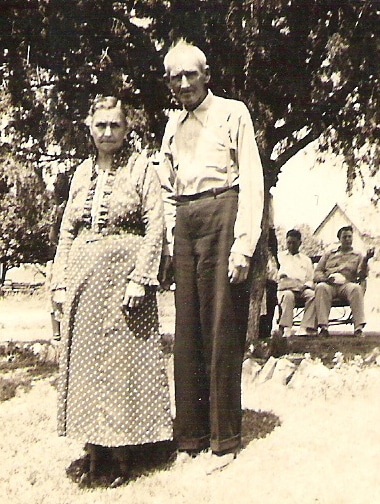
In 1856, George L. Young, Sr. married Josette Vieux, daughter of Potawatomi
fur trader Jacques Vieux, Jr. and Liz Langier, in Indianola, Kansas. Josette’s grandfather, Jacques Vieux, Sr., married a Potawatomi woman named Angelique LeRoy in Wisconsin. Josette’s father Jacques Vieux, Jr. and uncle Louis Vieux helped her grandfather maintain a successful fur trading business in the Great Lakes region.
George Sr. and Josette had three children, Anna, Alice and George L., Jr. After the Treaty of 1867, the Young family left Kansas and traveled south into Indian Territory. George Sr. owned a general store and one of 11 saloons in Meanko, Oklahoma.
His Potawatomi children established themselves across Oklahoma and built families of their own, including George Jr., who married Elizabeth-McDole-Vasser-Young. Elizabeth was the daughter of Susan Vasseur, a Potawatomi, and James P. McDole. George and Elizabeth raised six boys and three girls. They believed in the importance of music, encouraging their children to learn instruments. Elizabeth paid for their music lessons as a seamstress, and the family sang and played religious music prior to special meals.
Very influential in early Potawatomi affairs, the family built a legacy around protecting the Tribe’s interests.
